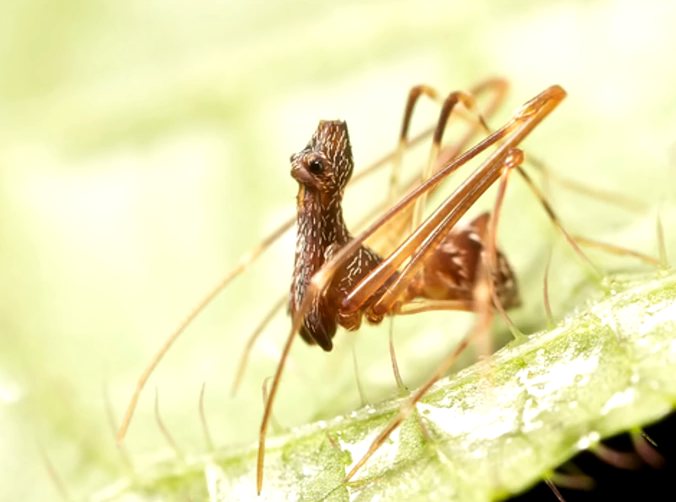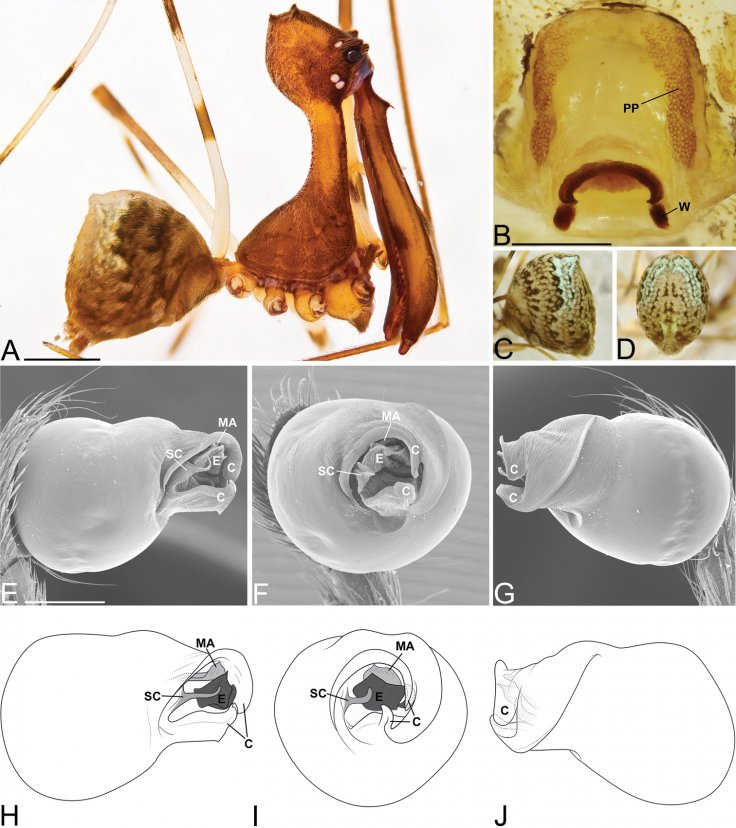
A species ending up preying on their own kith and kin is not something new. After all, it's all about maintaining the balance in nature and survival of the fittest. But, have you ever seen a spider as quick and fatal as a cobra and as quiet as an owl with a size similar to a grain of rice? Madagascar should be the place for you to get a first-hand experience of these lethal creatures.
Araneae, Archaeidae, also known as the assassin or pelican spiders hold their prey in mid-air and choke it to death. These spiders have jaws similar to the seabirds' beak, hence the name. They hoist their prey in the air by stabbing the victims with their razor sharp fangs. According to scientists, this mode of attack lowers chances of a counter-attack from the victims.
Hannah Wood, curator of arachnids and myriapods at the Smithsonian's National Museum of Natural History, in her paper published in the journal Zookeys, speaks of 18 new species of pelican spiders found in Madagascar. According to Wood, these spiders catch another spider as it simply walks by.
Home and habits
The pelican spiders don't spin their own webs but are active hunters themselves. They roam about freely over another spider's web. These spiders are native to Madagascar, Australia, and South Africa. They belong to an ancient paleoendemic group that has existed since the time of Pangaea.
Wood believes that the pelican spiders follow the silk dragline left behind by all the spiders while wandering through the forest at night, waving their first pair of legs and making "big figure-eights with them as they walk".
Pelican spiders, however, never prey on one of its own. Wood conducted an experiment to check whether the assassin spider attacks another one of its kind by placing several pelican spiders into a petri dish. The results were negative.

What does history say about them?
Pelican spiders have a distinct North Hemisphere lineage. The ancient group to which Archaeid spiders belong are now extinct and can be known only from fossils dating back to the Eocene period to the Jurassic.
The extant lineage stretches to the Southern Hemisphere and restricts the spread till Australia, South Africa and Madagascar. After Pangaea broke into Gondwana and Laurasia in the Jurassic age, the split between the extinct northern and southern faunas took place and hence the distribution. Although the northern lineage went extinct, the southern lineage still lives.
18 newly-discovered fearsome species
18 species of these spiders have strange features. Some of them have a ring of horns on their heads resembling a crown. Wood named these spiders after local Malagasy kings and queens. Another species has been named Eriauchenius milajaneae, after Wood's daughter, Mila Jane.
"The discovery and description of 18 new species is an exciting reminder of the diversity of life on Earth and what still remains to be found," said Michael Rix, researching on Australia's pelican spiders at the Queensland Museum.
Mark Harvey, senior curator of arachnids and myriapods at the Western Australian Museum, states that the Malagasy species of spiders are found in a small area of the island. This points out at the ongoing habitat loss that is proving to be fatal for these unique species of spiders.









